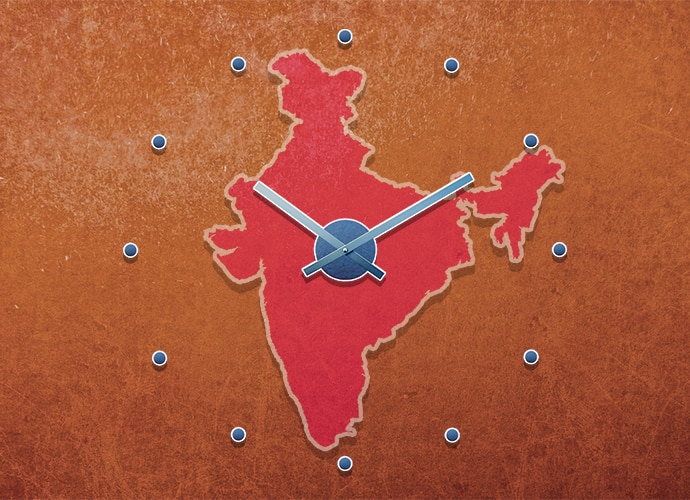Are we ready for IST?

For the entire uproar over days, dates and years, there is surprisingly little concern over hours, minutes and seconds. That might change now. According to a Hindustan Times report, India is seeking to legalise Indian Standard Time.
But what does that mean?
At this moment, the time on your computers or phones is mostly sourced from Network Time Protocol (NTP), a networking protocol for clock synchronisation between computer systems over data networks designed by University of Delaware in the United States. But once IST is legalised, time, in India, can be sourced only from the National Physical Laboratory (NPL), India's official timekeeper.
Why is this important?
A primary concern is security. Other concerns include streamlining time, avoiding confusion and errors in operations that involve precision, especially in terms of time. According to Dinesh K Aswal, a director at NPL, “Time differs by one to several seconds for users, depending on where it is sourced from. In most cases, this is from the US-based servers or GPS, which is also a US-owned technology.”
At present, the Legal Metrology Act of 2009, which establishes and enforces standards of weights and measures, regulates trade and commerce in weights, measures and other goods which are sold or distributed by weight, measure or number and for matters connected therewith or incidental thereto, does not recognise the Indian Standard Time (IST) as the legal time of the country.
Despite that, several key organisations like the Indian Space Research Organisation (ISRO), the Indian Air Force (IAF), airports and multiple banks use IST generated by NPL.
Ashish Agarwal, a scientist at NPL adds: “When it comes to security, including defence and cyber security, ATM and online transactions, even seconds make a difference... [Thus] we are pushing for one nation, one time, so there is only one source of Indian Standard Time.”
What are the roadblocks
As is the case with any major amendment — this definitely being one — infrastructure will have to be put in place to disseminate information about time. The Hindu, on March 28, reported that two towers are likely to be erected by NPL at as-yet-undecided locations in the country for disseminating details about IST.
The report added that this exercise would require “a plethora of permissions” from various governmental departments to host these towers, in addition to an investment of about Rs 600 crore, which it will raise privately.

The most fundamental question, however, continues to remain a problematic one.
Is IST the right way to go about it?
At present, IST — a time zone also shared by Sri Lanka — is measured as Coordinated Universal Time (UTC) + 5.30. While it is the standard now, and soon to be the officially legalised one, it was not so before 1906.
At the time, there were three separate time zones in the Indian subcontinent, demarcated in terms of three principal presidencies: Bombay, Calcutta and Madras. On January 1, 1906, the British established the central median running through Allahabad at 82.5° E and IST was the official time zone; although it was not entirely adopted in spirit immediately — both Bombay and Calcutta maintained their own time zones till 1948 and 1955, respectively.
In addition, there was a Port Blair Mean Time, and The Railway Mean Time (established by the British to avoid confusion in travel). In the northeast, there was also the Bagan (Garden) Time, which continues to be an important issue even today.
Why? India's northeast sees sunrise almost two hours before say a place like Mumbai.
Speaking to The Times of India in 2010, RK Barman of the Assam Science Technology and Environment Council (ASTEC) had noted that “this two-hour time gap is completely overlooked. Office starts in the northeast six hours after daybreak as against four in the rest of India. Working and sleeping hours get postponed. The real clock differs from the official clock. Daylight hours are wasted, leading to higher power consumption".
A demand for a separate time zone in the northeast justifiably makes sense. After all, a country having multiple time zones is not unheard of. Russia, USA, Canada, Australia, Mexico, Brazil, Indonesia, Kazakhstan, Mongolia, the Democratic Republic of the Congo, Kiribati, Micronesia, Chile, Spain, Portugal, and Ecuador — they all have multiple time zones in their mainland.
Often, the sheer size or spread of landmass requires such variations. But not everyone seems to agree with this idea.
P Banerjee, a senior scientist with NPL, told ToI in 2010: "Instead of a separate time zone, we can advance office timings that are convenient to the [seven] states. The introduction of a Daylight Saving Time (DST) scheme for the country would solve the entire problem. Also, a separate time zone cannot be introduced arbitrarily against international conventions. Plus, there are logistical problems like keeping pace with national railway and airlines timings with two time zones."
Another solution that has often been suggested is that the IST for the entire country be extended by half an hour. And this is an idea that has a lot of merit. An important underlying objective for a separate time zone or extending the IST is energy savings. Researchers from the National Institute of Advanced Studies, Bangalore found that by just advancing our clocks by 30 minutes, about 2.7 billion units of electricity can be saved every year.
Unlike DST, the resetting of IST is going to be a one-time affair.
The legalisation of IST is, without a doubt, an important step.
But before this fundamental decision gets a nod, is it not prudent to survey the problems that surround existing constructs?

